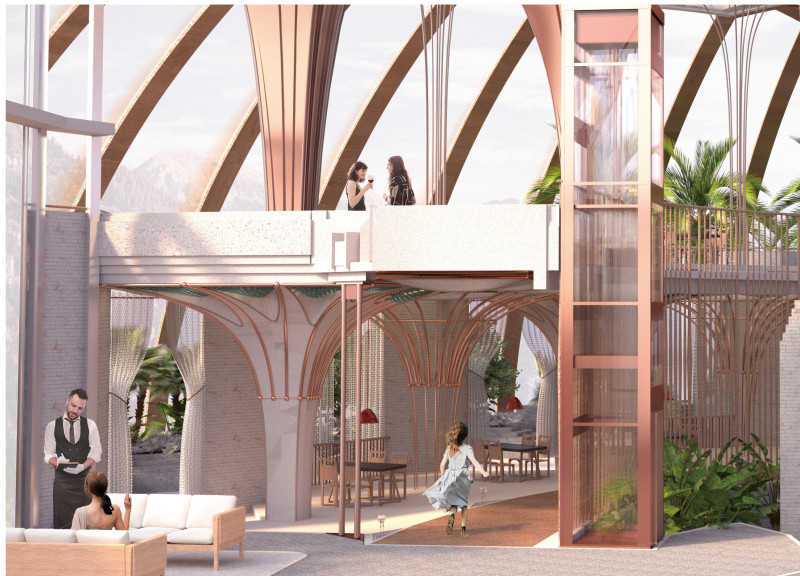5 key facts about this project
Icelandic Botantopia is a greenhouse restaurant designed to connect visitors with the surrounding landscape of Iceland. Positioned near Mývatn nature baths and the Hverfjall volcano, the building aims to reflect the natural features and ecological richness of the area. The design integrates the components of nature and culinary practices, inviting guests to experience both the food and the environment in harmony.
Translucent Dome
At the heart of the design is a translucent dome that serves as the main structural element. The dome features patterns inspired by natural forms, creating a play of light and shadow that enhances the space. As natural light filters through, it creates a calming ambiance for visitors. The dome helps to link the indoor space with the outdoor scenery, encouraging guests to take in the beauty of the landscape surrounding them.
Organic Grids and Spatial Interaction
The structure includes organic grids that not only support the architecture but also contribute to its aesthetic appeal. These grids are designed to evoke local plant life, marrying functionality with artistry. The layout promotes movement, guiding visitors through the space and allowing them to engage with the plants. This approach fosters an immersive experience, where guests can appreciate the intricate relationship between the building and its natural surroundings.
Light and Materiality
Consideration of light is an important aspect of the design. Rays from the dome cast intricate patterns throughout the interior, making for a dynamic setting. Specific materials, including whisky-brown columns and frosty glass panels, create a warm atmosphere while maintaining transparency. This choice allows easy passage of light, reinforcing the connection between inside and outside while grounding the project in its local context.
The grand staircase is a prominent feature of the design, connecting different levels and enhancing spatial quality. It is accompanied by planters that cascade with greenery, further linking the indoor environment to the natural world outside. This architectural detail creates a visual flow, allowing the divisions between constructed spaces and nature to blur into one unified experience.






















































